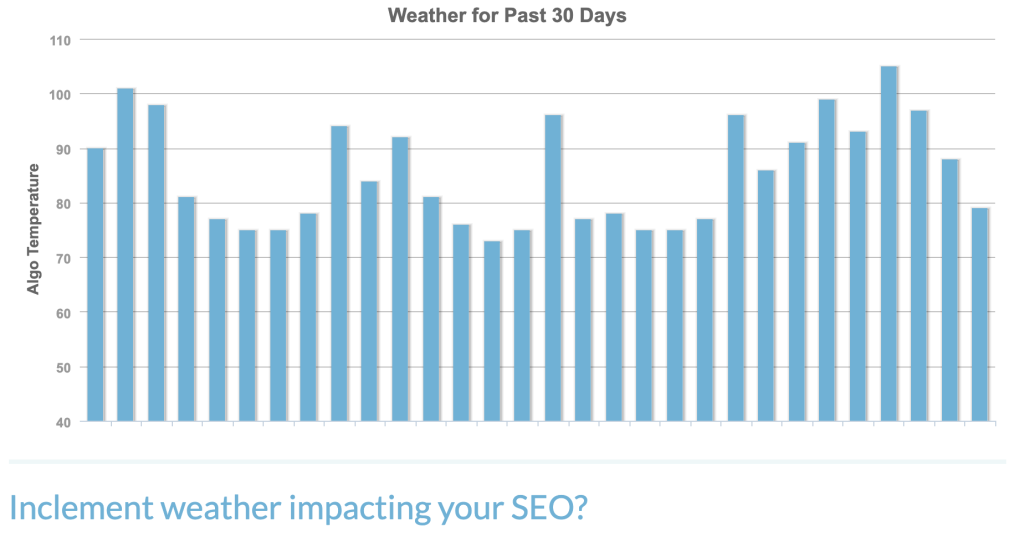
Increase Domain Authority Like a Boss
If websites were human, and you asked them what they wanted from their world, the answer would likely be for people to visit them more often. Every website wants to be seen the most, heard the loudest, and be the answer to people’s needs.
There’s a lot that goes into becoming that website—the one that’s visited often, offers the answers, and sells the products. When we talk about SEO (search engine optimization) or SERPs (search engine results pages), a lot is going on behind the scenes with algorithms. There are many algorithms at work to determine ranking factors and deliver what you need from a search engine.
Understanding the mechanics of what you’re served in search engines will help distinguish what Domain Authority (DA) is, why it matters, and how you can increase it.
Algorithms
Each search engine has its own set of algorithms. Google has its collection and updates them frequently— the latest was in March 2019. Each algorithm has a job. Big ones include the Panda update of 2011 that was meant to curb the flood of low-quality content from content farms. And the Penguin update of 2016, intended to judge the value of links and support the importance of quality backlinks.
Algorithms work in conjunction to serve you, as a user, exactly what you’re looking for. And to do so, they’re updated around 500 to 600 times a year.
The frequency of algorithm updates, and Google not announcing when search ranking changes, led Moz to create MozCast to track the changes and updates in Google’s algorithms.

On MozCast, each algorithm update is like a weather change and affects where web pages are shown in Google search results.
In addition to MozCast, Moz created Domain Authority as a way to rank domains. According to Moz:
“Domain Authority is calculated by evaluating multiple factors, including linking root domains and number of total links, into a single DA score. This score can then be used when comparing websites or tracking the “ranking strength” of a website over time. Domain Authority is not a metric used by Google in determining search rankings and has no effect on the SERPs.”
What is Domain Authority
Domain Authority (DA) is Moz’s domain ranking score that rates sites from 1-100 on a logarithmic scale. This proprietary algorithm primarily measures natural links; links to the site, links from the site, and the quality of those links, along with other metrics. Sites with high DA are considered experts and in turn, are served higher in SERPs.
The DA metric, recently overhauled this year with DA 2.0, is Moz’s educated (algorithmic) guess at how high up a site will be served in Google search, but it shouldn’t be looked at in a vacuum. A site’s DA score is only as valuable as your competitors’ scores, especially how you rank against each other in SERPs for specific keywords.
While your DA score should be high, it’s important to look at the score as part of your holistic SEO strategy. If there is room for improvement with your score, you need to look at your site as a whole to help fix it.
You can check and monitor your website’s Domain Authority by using Moz’s Open Site Explorer (OSE).
Here’s the good news; you can always improve your Domain Authority score. The bad news? With the Domain Authority update of 2019, most brands lost about 6-7% on their Domain Authority scores. And to increase it, sometimes it takes a lot longer than you want. Here are five steps to improve your site’s DA:
1. Use a robust external and internal linking strategy.
A great way to monitor your link building strategy is by using a tool. By evaluating your root domain, you can find the number of inbound and outbound links for your site, including those that are valuable and those that aren’t, and which are follow vs. no-follow.
2. Create high-quality content (with lots of great links).
Another way to increase Domain Authority is to write valuable, relevant content about your industry. If you’re a new domain, it’s better to find niches in your industry where content is being under-served. By capitalizing on niche keywords, your site can have a better chance of being served for niche inquiries, providing more organic traffic and supporting your overall ranking.
3. Maintain on-site SEO.
On-site SEO technicalities are key factors when it comes to organic traffic. These include meta tags, alt tags, title tags, SEO-rich titles, overall site speed, and mobile optimization. For your site to be authoritative with Google, these technicalities should be both flawless and continually maintained.
4. Use social media.
Guess which websites have some of the highest Domain Authority scores? Facebook, Twitter, Instagram, and LinkedIn. Why? High-quality links and traffic; lots of both. Because of the overwhelming amount of content and the sharing and linking of it, these sites are considered authoritative to the search engines.
Make sure you have link profiles on the social media platforms that are relevant to your brand and your users, but also that you’re linking out within your content. Social media presence with the use of a content marketing strategy will increase DA authority.



5. All great things take time.
SEO, DA, SERPs all share the common factor of time. New websites all start with scores of 1 and increase over time. However, if you’re diligent and have a product or service that fulfills a need and is hence valuable for users, you will see ranking.
Move Your Domain Authority Forward
A website is what you make it. Your goal is to gather (the right) visitors and keep them coming back as they need what your brand has. Savy’s marketing and SEO experts can help move your search rankings forward.
Do you know your domain’s DA score? Have you been able to increase Domain Authority successfully? Tell us in the comments below!
Recent Posts
How to Rebrand Your Instagram for Better Engagement and Brand Recognition
Your Instagram presence can act as a beacon for brand recognition and customer engagement. It’s about painting a picture so compelling that your audience cannot help but be drawn to […]
Read MoreFrom Clicks to Conversions: The Science of High-Performing Digital Ads
The journey from interest to purchase is often paved with digital advertisements. However, not all digital ads are crafted equally. While some fade into the background, others command attention and […]
Read MoreBrand Consistency Examples That Will Make You Rethink Your Marketing Strategy
A consistent and strategic brand identity across all platforms is not just beneficial; it’s essential. By exploring real-world brand consistency examples, we uncover the immense power of maintaining a coherent […]
Read More3 Ways to Transform Blogs With SEO and Make Google Love Your Content
As marketers and business owners, our goal is to ensure the blogs we publish confidently stride into the spotlight of Google’s top search results. Achieving this requires great content, but […]
Read More



